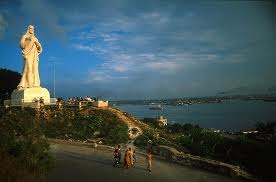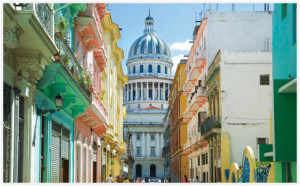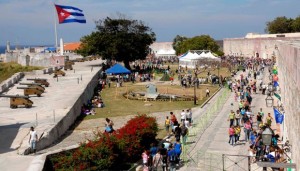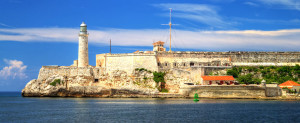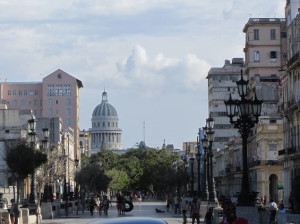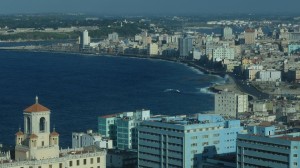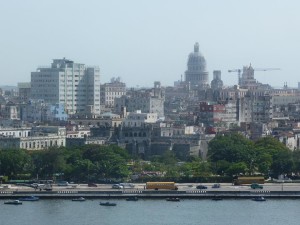HAVANA, A 7 WONDER CITY!
Havana is the capital city, largest city, and leading commercial centre of Cuba. The city proper has a population of 2.1 million inhabitants, and it spans a total of 728.26 km2 (281.18 sq mi) – making it the largest city by area, the most populous city, and one of the most cultural richest urban centers of the World, where the colonial past is being evidenciated by a variaty of impressive castles, cathedrals, museums, and big houses.
The city of Havana was founded by the Spaniard conquer Diego Velázquez de Cuéllar, under the fundational name of Villa de San Cristóbal de La Habana in the 16th century and due to its strategic location it served as a springboard for the Spanish conquest of the continent becoming a stopping point for the treasure-laden Spanish galleons on the crossing between the New World and the Old World. Havana began as a trading port, and suffered regular attacks by buccaneers, pirates, and French corsairs. The first attack and resultant burning of the city was by the French corsair Jacques de Sores in 1555. Such attacks convinced the Spanish Crown to fund the construction of the first fortresses in the main cities — not only to counteract the pirates and corsairs, but also to exert more control over commerce with the West Indies, and to limit the extensive contrabando (black market) that had arisen due to the trade restrictions imposed by the Casa de Contratación of Seville (the crown-controlled trading house that held a monopoly on New World trade). After regaining the city that was sized by the British Empired, the Spaniards transformed Havana into the most heavily fortified city in the Americas. Construction began on what was to become the Fortress of San Carlos de la Cabaña. King Philip II of Spain granted Havana the title of City in 1592. Walls as well as forts were built to protect the old city. In 1634 Havana was declared by a Royal Band «Key of the New World and West Indies Safeguard», and in 1665 was able to have its own stamp with the tree towers, the fortress of «la Real Fuerza», «El Morro» and «La Punta».

In the 1980s many parts of Old Havana, including the Plaza de Armas, became part of a projected 35-year multimillion-dollar restoration project, for Cubans to appreciate their past and boost tourism. In the past ten years, with the assistance of foreign aid and under the support of local city historian Eusebio Leal Spengler, large parts of Habana Vieja have been renovated. The city is moving forward with their renovations, with most of the major plazas (Plaza Vieja, Plaza de la Catedral, Plaza de San Francisco and Plaza de Armas) and major tourist streets (Obispo and Mercaderes) near completion.
The city extends mostly westward and southward from the bay, which is entered through a narrow inlet and which divides into three main harbours: Marimelena, Guanabacoa and Atarés.
Havana is the official seat of the higher organs legislative, executive and judicial branches of state, all the central and almost all companies and associations nationwide. Also meets as many branches and head offices of foreign entities located in Cuba.
Since immemorial times it became a meeting place, which like magnet attracts even the greedy eyes of its neighbors. Havana, very old and modern at the same time, has an almost indescribable charm and many agree, and not just its dwellers-that those who do not know it, then do not know Cuba.
It is a bustling city (it has about 15,000 rooms in 80 hotels) with quality beaches at just 15 minutes from its center. With nearly five centuries accumulating history, this city, especially its historic center, altogether constitutes one of the most beautiful Latin American locations.
Tourists can walk all along this living museum and remember everything. Havana presents itself to travelers of this new century as a different and new city, emerged on its ruins, restored to the inexorable passage of time.
The historical memory goes back almost five centuries ago. Legend has it that in the shade of a ceiba tree, on November 16, 1519, the then Villa of San Cristóbal de La Habana, was just founded on the site where now the Templete is located, witness by then of the first city hall and the first mass.
There are many places that distinguish it such as the Castel of the Three Kings of Morro, the one of the Royal Force, the Havana Cathedral, the Malecón (Seawall), the Capitol and the statue of the Christ of Habana, to name just the most outstanding ones.
Havana has a lot of history, culture and traditions, and it is Cuba’s main cultural destination.
Old Havana, declared World Heritage site in 1982 by UNESCO, and the best example of colonial architecture in the Caribbean, has accommodations which without sacrificing modernity, gain in preference between those who want to experience the privilege of traveling back over time.
All tourist modalities can be practiced in this pole, source of inspiration for the creators of the various arts and famous sites like Tropicana cabaret and El Floridita and La Bodeguita del Medio restaurants.
Today, Havana is the largest recipient of vacationers in the country (nearly 50%) and, along with Varadero, generates 70% of this sector revenues.
Cuba is connected to 43 cities in the world through hundreds of airlines and keeps 10 international airports running; the most important and modern is Havana’s «José Martí»; while the sea connection is established through numerous marinas, including Tarara and Hemingway Marinas, also in the capital city.
New projections will be developed in coming years in terms of infrastructure (new hotels and more golf courses); and the future transformation of Havana bay in an extraordinary tourist port, which will be consolidated as one of the most important destinations in the region in such vacation modality.
